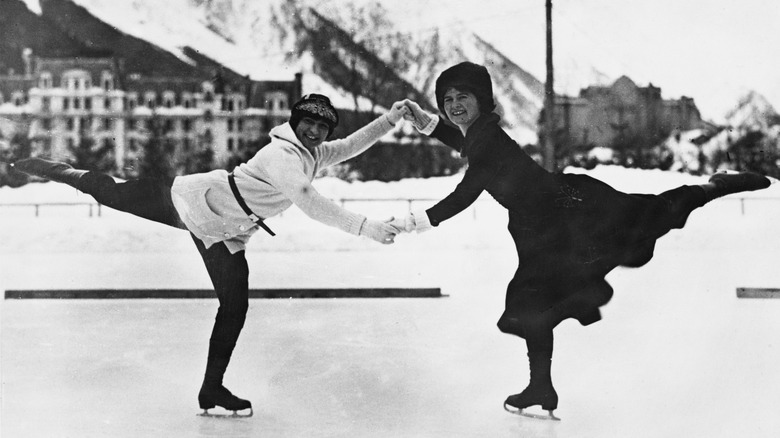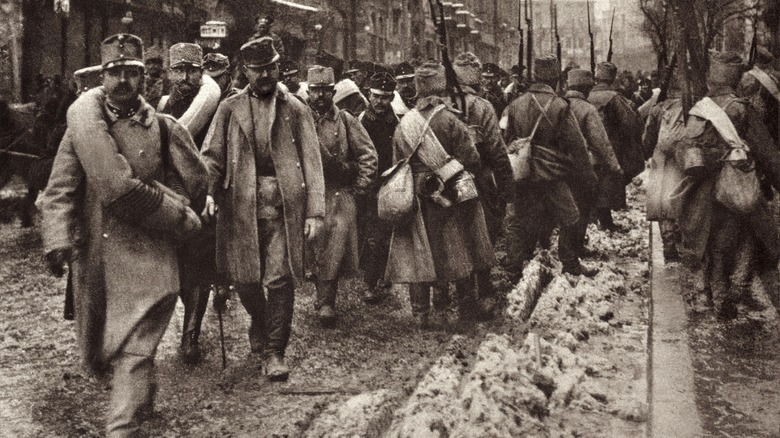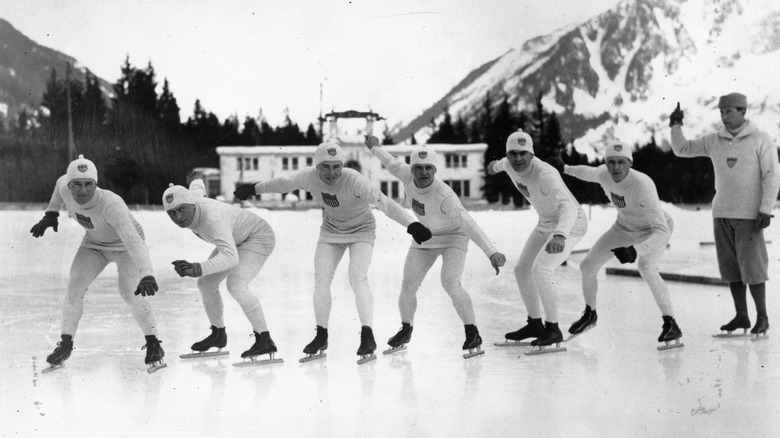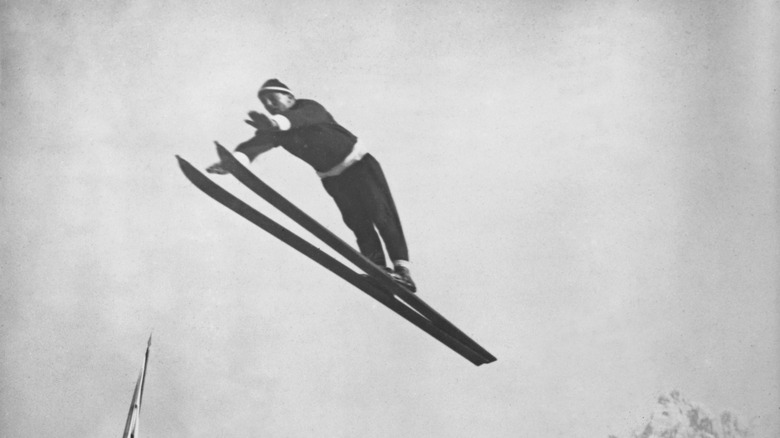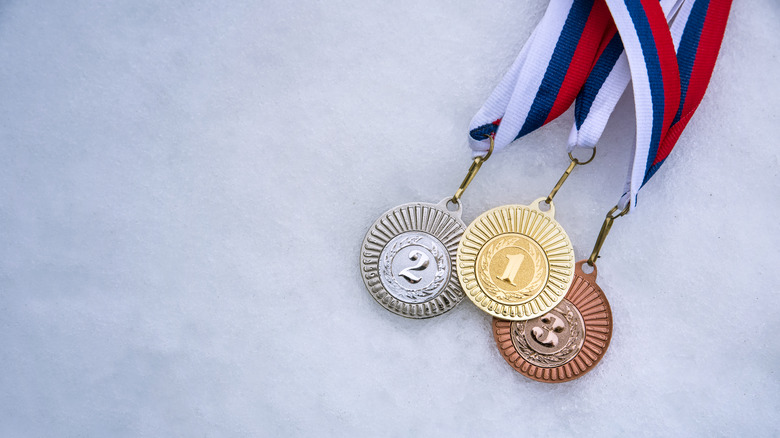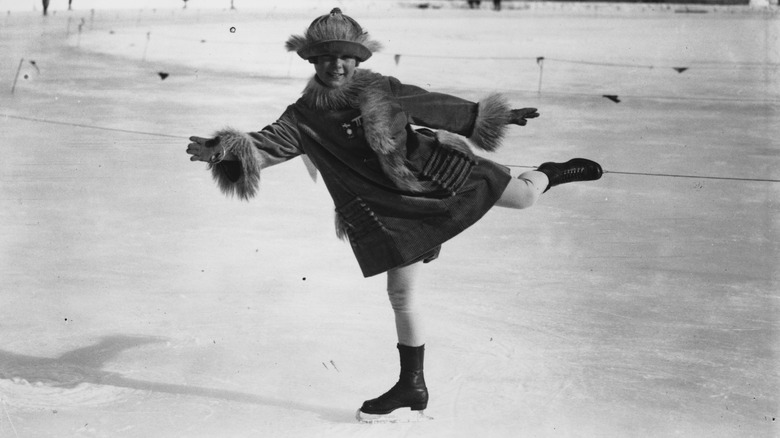The Truth About The First Winter Olympics
Fans of sports like hockey and figure skating, performed at the elite level of any Olympian, may be surprised to find out there were no Winter Olympic Games until some 30 years after the birth of the modern Olympics, in 1896. Held in 1924, what would one day become the Winter Olympics took place in the French alpine town of Chamonix, with only 250 athletes from 16 countries competing in a mere 16 events, according to Britannica. About a century later, the 2022 Winter Games are in Beijing, China, February 4–20 on the networks of NBC and NBCUniversal.
Enthusiasm at the time for an Olympic event devoted strictly to sports on ice and snow was mixed. The requirement for a colder climate and the added cost of equipment to participate limited the countries and athletes who could attend, an issue the modern Winter Olympics struggles with, even today. Illustrating how athletic prowess would one day intersect with modern popular culture, the story of the first Winter Olympics also presents fascinating insight into the evolution of many winter sports we now know and love, as well as the geo-political forces shaping what would one day become one of the world's most well-known international sporting events.
It was delayed by World War I
The first Winter Olympics were staged in Chamonix after the International Olympic Committee (IOC) gave its blessing for a so-called Winter Sports Week to take place, per the official Olympics website. Prior to that, there were several attempts at something like a Winter Olympic Games, under a few different names, and organized somewhat differently. The Winter Olympics, in fact, might have come about much sooner if not for one of the 20th centuries most cataclysmic military conflicts: World War I, according to History.
The proposal for a separate Olympic event just for wintertime competition was first floated by the IOC in 1912. Sweden was already home to what they called the Nordic Games, happening every four years, and offering a very similar slate of events. For this reason, the country signaled they would not support such a proposal, and plans were scrapped. Following that, Germany tried again for something like the Winter Olympics to precede the 1916 games in Berlin, but the outbreak of World War I scuttled those plans, as were the summer games themselves. By 1920, sports like ice hockey and figure skating, which would one day become marquee attractions in the Winter Olympics, were added to the Summer Olympics in Antwerp, Belgium. Supporters of a dedicated Winter Olympics would have to wait for another four years (per History).
It wasn't even called the Olympics
If you could travel back in time to attend what would one day be called the Winter Olympics, you might be surprised to find out it wasn't even called the Winter Olympics until one year later, according to Time Magazine. With the blessing of the Scandinavians, the IOC announced an officially sanctioned "Winter Sports Week" to be held in France, organized in association with the French National Olympic Committee. The event was very well-received, with some 10,000 spectators in attendance.
Riding on this success, the name "Winter Olympics" was retroactively added to the event in 1925, and with that, the modern Winter Olympics were born. At the closing ceremony, then-IOC President Pierre de Coubertin said, "Winter sports have about them a certain purity, and that is why I was inclined to support and nurture them in this Olympic environment," adding, "the recent unprecedented success of these Games gives us hope," according to the official Olympics website.
Only 16 sports were included
As far as competition, what would one day be called the Winter Olympic Games were a far cry from the spectacle that modern Olympics would one day become. The slate of competition remains somewhat limited in the Winter Olympics when compared to the summer games, but today, Winter Olympic sports are divided into 15 broad categories, with numerous individual events listed under each. Hundreds of athletes participate from all over the world, according to Top End Sports. New sports are also consistently added, such as women's monobob, mens and women's big air, aerial skiing mixed team events, and ski jumping, among many others scheduled for the 2022 games.
Compare that to the Chamonix games, with only 16 countries competing in 16 events, and it's plain to see the Winter Olympics have grown significantly over the last 100 years. Leading the pack in the Chamonix games were the Scandinavians, winning the lion's share of medals in the rink and on the slopes, while the Canadians won gold in hockey. Typically dominating modern Olympic games in both summer and winter, Americans only took home one gold medal, in 500-meter speed-skating, won by Charles Jewtraw, according to History.
One medal was revoked 50 years later
Controversial outcomes to Olympic competition are nothing new, with similar issues dating all the way back to the first Winter Olympics. According to Skiing History, Norwegian Thorleif Haug was the skiing equivalent of Lebron James in the 1920s. In the 1924 winter games, Haug dominated, winning gold in events like the 18-km cross-country race, among many others (via Britannica). He also took home bronze in the ski jumping competition.
All scores combined meant Haug won the overall gold in Nordic combined. Half century later, though, it was proven that Haug's Norwegian teammate Thoralf Strömstad had in fact won bronze in ski jumping, missed due to a scoring error, as Britannica reports. That bronze was awarded to Strömstad in 1974, when he was in his 80s. Despite the fact Haug had one medal taken from him, he remains a legend in skiing, the namesake of several prominent races and honored with a statue in Norway. When he died, 20,000 Norwegians gathered to view the funeral procession (via Skiing History).
A future movie star competed
Winning an Olympic gold medal can be a one-way ticket to stardom for many athletes. One figure skater in Chamonix, 11-year-old Sonja Henie, went on to find celebrity, even though she won no medals at all in her first Olympic outing. At such a young age, making the Olympics at all is notable, and Henie would go on to find her time to shine on the podium, winning gold in 1928, 1932, and 1936, according to Time Magazine.
These days, Henie is remembered as much for her subsequent movie appearances as she is as an Olympian, starring in several ice skating-themed Hollywood movies in the 1930s, such as "Thin Ice" and "One in a Million." Henie was not just an accomplished Olympian, but also was a major movie star up through the mid-1940s.
The Winter Olympics have changed a lot in the last decades since they were founded in 1924. One thing remains the same, however: the joy and excitement of watching the world's greatest athletes compete on snow and ice in some of the world's most beautiful natural environments.
